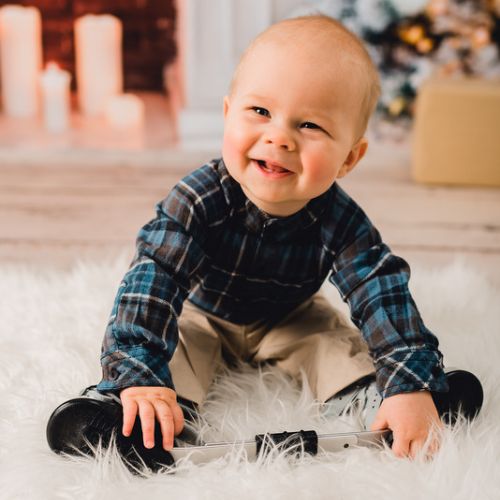Clubfoot treatment
The Ponseti method
Worldwide recognized as the golden standard.
The deformity of the foot will not correct itself: treatment is needed. Without proper treatment, clubfoot causes lifelong pain and disability. Both in the present and past, different methods are used but nowadays the Ponseti method is worldwide recognized as the golden standard for clubfoot treatment. Compared to other techniques, it has the best long term outcomes , achieving fully functional, pain-free feet in over 90% of cases.
Clubfoot treatment using the Ponseti method consists of three phases
Step 1 – Correction
The Ponseti method uses very specific and gentle manipulations to align the foot in a more normal position and casting to allow the soft bones to “set”. Usually, about five to seven weekly casts, extending from the toes to the upper thigh and the knee at right angle are needed to fully correct the feet. Before applying the last cast, in most cases the Achilles tendon is cut (tenotomy) to achieve full correction. This last cast stays on for three weeks, after which the tendon is fully healed and the feet are ready to start wearing the brace.

Step 2 – Prevention of Relapse
Clubfoot has a strong tendency to relapse. To prevent that, a foot abduction brace has to be worn following initial correction. The brace consists of two sandals attached on a bar. The brace has to be worn fulltime for the first three months, after that at sleep- and naptimes until the child reaches at least four years of age.


Step 2 – Prevention of Relapse
Clubfoot has a strong tendency to relapse. To prevent that, a foot abduction brace has to be worn following initial correction. The brace consists of two sandals attached on a bar. The brace has to be worn fulltime for the first three months, after that at sleep- and naptimes until the child reaches at least four years of age.
Step 3 – Surveillance
Your child will have regular visits until fully grown to monitor how the legs and feet are growing. Keep in mind that all children are different and length of treatment may vary.

In only a small minority of cases, less than 5%, the clubfoot deformity is more severe and might need surgical correction. Results are best if bone and joint surgery is avoided altogether, because it causes scarring, stiffness and muscle weakness that becomes more severe over time.

